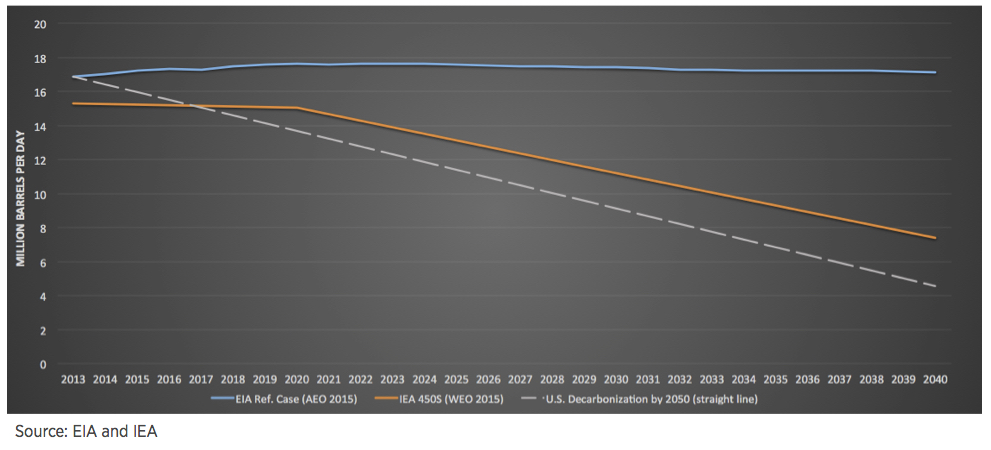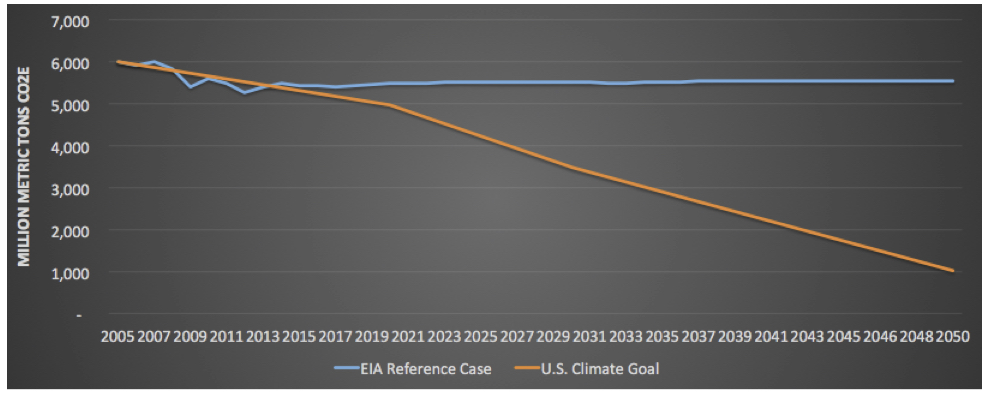
Oops they did it again
In our latest briefing, we unravel why U.S. government agencies are setting themselves up for climate failure when assessing the climate impact of fossil fuel decisions, and what they should do about it.
New briefing outlines how the U.S. government is betting on climate failure
The U.S. government has managed to make yet another energy policy recommendation that assumes climate action failure. Illogical? Yes. Setting yourself up to fail? Yes. Time for a new way to make decisions? Absolutely.
In the recently released Bureau of Ocean Energy Management’s (BOEM) draft 5 year offshore drilling plan – Arctic and Gulf regions are still on the table, despite all evidence pointing to the reality that oil from those regions is unburnable carbon in a world where the U.S. acts on its climate goals.
In a finding that is even more convoluted, the BOEM actually suggests that more drilling in the Arctic and Gulf will reduce emissions… all because their analysis rests on the reckless assumption that global oil demand will soar and a small amount of emissions would be saved by drilling closer to home.
How is it that time and time again, the U.S. finds itself considering energy projects that are at complete cross-purposes with its climate policy (even in its current ‘need of more ambition’ form)?
The answer is the way government agencies rely on the Energy Information Administration’s (EIA) Reference Case scenario: a business-as-usual energy scenario that is not intended as a forecast and is associated with GHG emissions levels that would lead to 5 degrees Celsius or more of global warming.
In a new briefing note we released today with our colleagues at Greenpeace USA, we lay bare the case for why government agencies must stop using the EIA’s Reference Case to inform decisions about fossil fuel production and infrastructure and why they urgently need to develop climate-safe scenarios for energy project and policy decision making. As it currently stands, the trajectory the current model describes leads to 445% higher GHG emissions than the level the U.S. has committed to in order to tackle climate change (Figure 1). It is impossible to assess the climate impact of a decision if the model you are using assumes that energy use continues to overshoot climate limits.
Figure 1*: U.S. GHG emissions in AEO Reference Case and U.S. Climate Goal
Source: EIA AEO 2015 and the Department of State
In other words, when government departments like the BOEM are determining whether a project is going to be ‘needed’ in the coming decades, they are measuring its value in a world that bucks real world clean energy trends, assumes the collapse of most existing global climate policy, and bets that no further action to reduce greenhouse gas emissions will be taken.
The U.S. needs energy scenarios that align with its climate goals– including the ambitious goal to limit global warming to 1.5 degrees Celsius. Such a scenario doesn’t exist yet, but last month, organizations from Canada and the U.S. called on the Obama and Trudeau governments to act fast to implement a climate test that would base its analysis on scenarios that actually match the pathway towards a safer climate future.
As a rough estimate, we looked at what kind of trend we would have to see in U.S. oil demand as we make the necessary shift towards a decarbonized economy by mid-century (Figure 2).
Figure 2: U.S. Oil Demand: EIA Reference Case, IEA 450 Scenario, and U.S. Decarbonization by 2050

Clearly, what is currently on the table with the current Reference Case doesn’t cut it, but it comes up every single time we are faced with decisions on major fossil fuel projects (Keystone XL, the Arctic, Offshore drilling). We need to be betting on climate success, not climate failure.
Over the coming couple of months, the BOEM will be hearing from concerned citizens across the country and the message will be loud and clear: this plan doesn’t work for the climate and it doesn’t work for communities. The Gulf and the Arctic must come off of the table too.
The administration has gotten it right a handful of times over the past year – rejecting the Keystone XL tar sands pipeline because of its climate impact, taking the Atlantic off the table in this draft plan – we are heading in the right direction. And there is every reason for the BOEM to extend climate logic to our remaining offshore waters – it is 100% unburnable carbon.
And in the meantime, the government must give the EIA a mandate to look at energy scenarios that match our climate goals, and this must be the basis for a meaningful climate test (outlined here), that will help us close the dangerous gap between where we are and where we need to be on climate action.
Read the full briefing note here and the press release here.
*The EIA Reference Case only goes to 2040 but to compare with the 2050 climate goal we continued the trend out to 2050 as there is no reason to believe that in this scenario the trend would dramatically change after 25 years.

